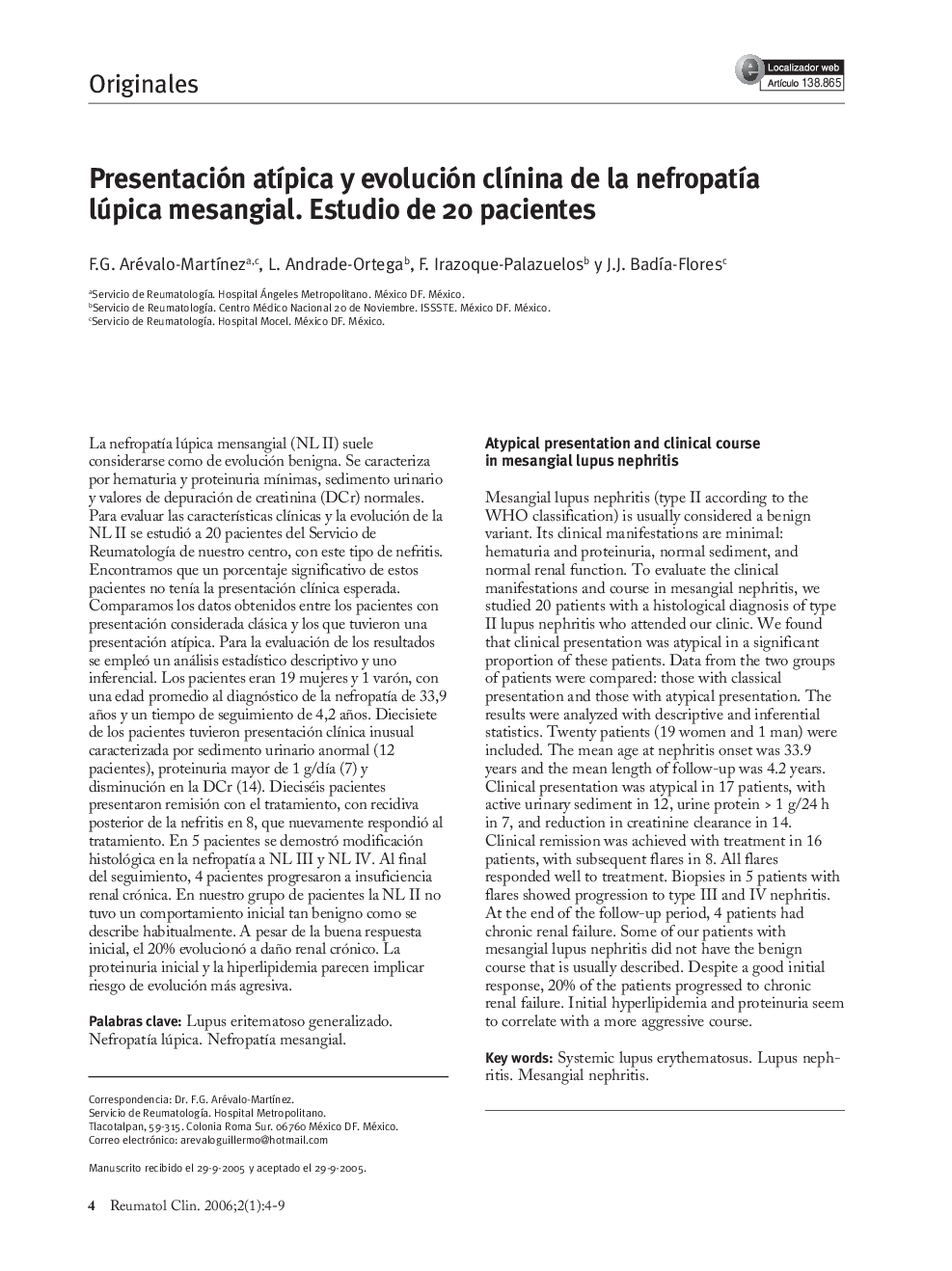| Article ID | Journal | Published Year | Pages | File Type |
|---|---|---|---|---|
| 3383995 | Reumatología Clínica | 2006 | 6 Pages |
Abstract
Mesangial lupus nephritis (type II according to the WHO classification) is usually considered a benign variant. Its clinical manifestations are minimal: hematuria and proteinuria, normal sediment, and normal renal function. To evaluate the clinical manifestations and course in mesangial nephritis, we studied 20 patients with a histological diagnosis of type II lupus nephritis who attended our clinic. We found that clinical presentation was atypical in a significant proportion of these patients. Data from the two groups of patients were compared: those with classical presentation and those with atypical presentation. The results were analyzed with descriptive and inferential statistics. Twenty patients (19 women and 1 man) were included. The mean age at nephritis onset was 33.9 years and the mean length of follow-up was 4.2 years. Clinical presentation was atypical in 17 patients, with active urinary sediment in 12, urine protein > 1 g/24 h in 7, and reduction in creatinine clearance in 14. Clinical remission was achieved with treatment in 16 patients, with subsequent flares in 8. All flares responded well to treatment. Biopsies in 5 patients with flares showed progression to type III and IV nephritis. At the end of the follow-up period, 4 patients had chronic renal failure. Some of our patients with mesangial lupus nephritis did not have the benign course that is usually described. Despite a good initial response, 20% of the patients progressed to chronic renal failure. Initial hyperlipidemia and proteinuria seem to correlate with a more aggressive course.
Related Topics
Health Sciences
Medicine and Dentistry
Immunology, Allergology and Rheumatology
Authors
F.G. Arévalo-MartÃnez, L. Andrade-Ortega, F. Irazoque-Palazuelos, J.J. BadÃa-Flores,
